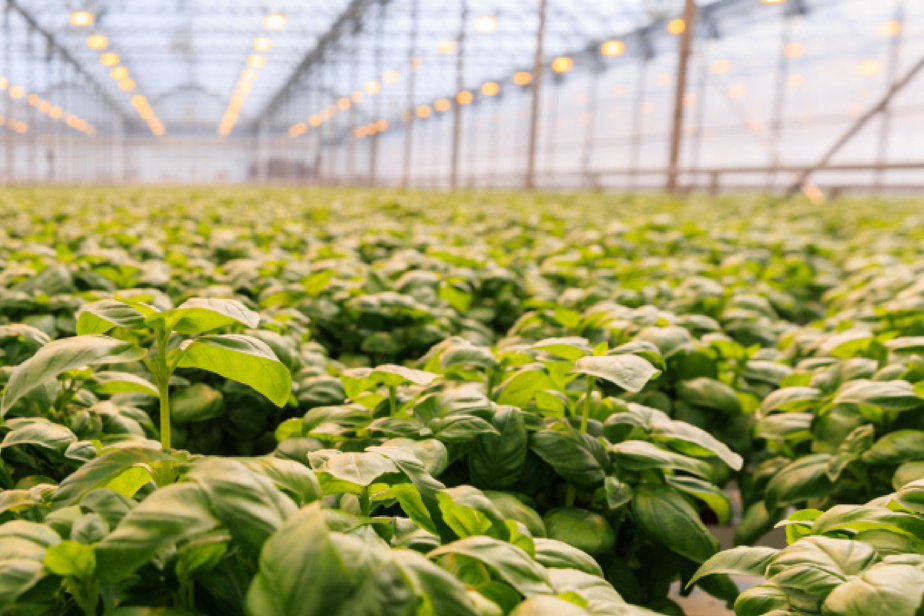(St. Norbert) Who sows reaps. Nearly two years after the launch of the greenhouse growth strategy, the volume of fruit and vegetable production has already almost doubled in Quebec, La Presse has learned. And that’s 347 new greenhouses sprouted in the province.
Régis lifts basil plants and places them on a conveyor belt. The pots move forward, then fall into a bag. Its work rate: 2800 packed herb plants per hour. Régis – the most productive employee of the Gourma greenhouses – is a robot.
It is in this greenhouse business in Lanaudière, considered the most advanced in terms of automation and robotization in Quebec, that the Minister of Agriculture, André Lamontagne, gave an appointment to La Presse to take stock of Quebec’s greenhouse growth strategy.
In order to increase the province’s food self-sufficiency, Quebec announced, in November 2020, its project to double the surface area of greenhouses by 2025. The goal was, logically, to double the volume of food produced in tight.
“One of the nice surprises is that when we have 56% of the areas reached, we are above 85% in terms of volume,” rejoiced the minister in an interview.
So far, 66 hectares have been added to the greenhouse park. Ultimately, the objective is to increase the areas of food grown in greenhouses from 123 hectares to 246 hectares.
When the strategy was launched, Quebec produced approximately 41,500 tonnes of greenhouse fruits and vegetables annually.
“Ultimately, it’s not areas that the world eats,” adds Minister Lamontagne.
This unexpected growth is attributable to the modernization of the greenhouse fleet and the implementation of approaches that promote productivity, believes Mr. Lamontagne.
“It’s like a lot of stars all aligning in the same place. The idea of the greenhouse strategy, of course, is to increase volumes and areas, but beyond that, what we wanted was to modernize the sector. We wanted to create an ecosystem, we wanted there to be innovation. »
Small, medium, large: since the launch of the strategy, 347 new greenhouses have been created thanks to various subsidy programs from the Quebec government.
So far, the Ministry of Agriculture, Fisheries and Food of Quebec (MAPAQ) has accepted 237 projects for small greenhouses and “large tunnels”.
“These small businesses can farm longer. They are able to offer more to their customers. These are small businesses that are less small and more successful in the territory, and that was super important, “explains the minister.
On the medium-sized greenhouse side, 101 companies were able to build or expand and modernize their facilities.
Finally, 22 new large greenhouses – those that supply the big brands – have been created thanks to the implementation of a preferential hydroelectricity tariff for heating or lighting.
“We still have several in sight, but these are bigger projects, therefore more complicated to attach,” underlines Mr. Lamontagne.
In Quebec, only 32% of greenhouse heating expenditures are allocated to natural gas, compared to 72% in Ontario, which has a large greenhouse industry.
Interestingly, 15 indoor farm projects also received grants. All of them use LED lights to grow their plants.
“These are areas that are small, but with increases in productivity that are incredible,” he describes.
At the start of the COVID-19 pandemic, Prime Minister François Legault indicated that his government would focus on increasing food self-sufficiency as an engine of economic recovery.
In 2021, MAPAQ carried out the exercise of calculating Quebec’s “potential self-sufficiency” capacity, that is to say the capacity to meet the consumption of different foods if the borders were to close in Quebec.
The Minister believes that investments in greenhouses will continue to move the needle even further. “Someone who wants to make greenhouses, if he doesn’t make it today, he won’t make it in his life, because everything is in place. »

